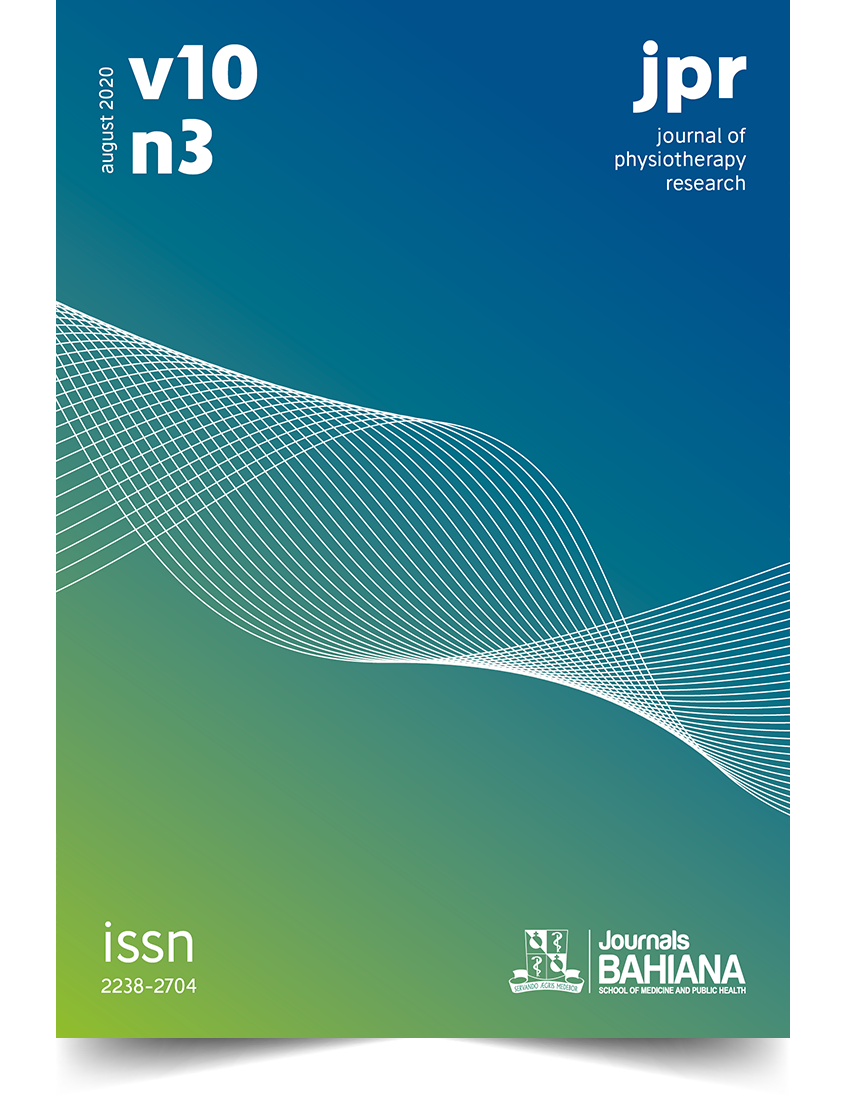Effect of dance in aquatic environment in fibromylgia
DOI:
https://doi.org/10.17267/2238-2704rpf.v10i3.3145Keywords:
Fibromyalgia. Dance therapy. Hydrotherapy.Abstract
INTRODUCTION: Fibromyalgia is one of the most frequent rheumatological diseases and with a higher incidence in the female population. Physiotherapy in general is one of the treatments used to minimize symptoms and aquatic therapy has been showing better results”. OBJECTIVE: To evaluate the pain level, life quality, fatigue, diastolic and systolic blood pressure, and total distance covered of women with fibromyalgic, before and after therapy with jazz dance in aquatic environment. METHOD: A longitudinal study with semiprobabilistic sample was carried out after approval by the Ethics Committee of Universidade Presbiteriana Mackenzie. There were 10 volunteers, aged between 40 and 70 years. They were submitted to 22 sessions, being it twice per week and contemplating 20 minutes of initial stretching, 30 minutes of dance and 10 minutes of relaxation. Data were collected through the use of scales: Fibromyalgia Impact Questionnaire (QIF), Borg Scale (Fatigue) and 6-Minute Walk Test (6MWT) that were applied at the beginning and end of the collections, and analog pain scale (EVA), which was applied at the beginning and at the end of each intervention. The data were initially submitted to the KS test to verify the normality of the sample, then analyzed by Wilcoxon and Student T tests, with significance level p ? 0.05 (5%). RESULTS: There was a significant difference when the initial EVA was related to the final EVA, with p = 0.000. Regarding QIF, there was no significant difference when comparing initial and the final EVA, with p = 0.241. Even as the TC6 in the variables systolic blood pressure (P = 0.780), diastolic blood pressure (p = 0.257), Borg scale (p = 0.435), and total distance covered (p = 0.765). CONCLUSION: Dance as an aerobic exercise in aquatic environment provided an improvement in pain.Downloads
Download data is not yet available.
Downloads
Published
08/24/2020
Issue
Section
Original Articles
How to Cite
1.
Regra G, Salerno GRF, Ressurreição KS, Rodrigues Étria. Effect of dance in aquatic environment in fibromylgia. Rev Pesq Fisio [Internet]. 2020 Aug. 24 [cited 2025 Dec. 14];10(3):486-92. Available from: https://journals.bahiana.edu.br/index.php/fisioterapia/article/view/3145



